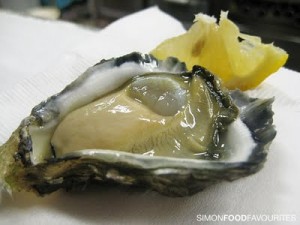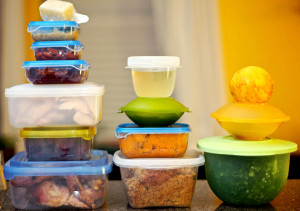Everything I know about Germany I learned from South Park’s portrayal of Cartman’s mom and her involvement with scheisse porn.
I gave an invited talk in Berlin about 15 years ago; my parents advised that German’s have no sense of humor; I ignored them. I failed.
Hwan Nam-kong of Furusato, a Korean restaurant in Berlin says “The fact that  it is still alive on the plate is a sign of quality.”
it is still alive on the plate is a sign of quality.”
World Crunch is talking about octopus moving around on the plate on its tentacles. The cook swiftly grabs it by its slimy head, pushes a skewer through the tentacles, wraps them around it – and voila, the Korean delicacy known as sannakji, served with chili sauce or a sesame oil and salt dip.
However, eating moving tentacles is not without danger: they can fix themselves to the inside of your mouth – or worse your throat – which could lead to suffocation and death. So if you order the dish in Korea make sure to chew well, advises Hwan Nam-kong. In her Berlin establishment, octopus is not served this way for the simple reason that it’s difficult to get live octopus in Germany.
She has heard that Germans believe that eating living things is a form of animal torture. “Every country has its own food culture that should be accepted by other cultures,” she says.
Koki Umesaka, a chef at Berlin’s Daruma Japanese restaurant, explains that with ikizukuri, a fish is served with its eyes, gills and mouth still moving. That’s not easy, he says. It requires a special technique, and a very sharp knife. Only very experienced chefs know how to do this, he says.
A similar side effect is attributed to another living food you can easily find in Germany – oysters. Greek mythology has it that Aphrodite, goddess of love, sprang from an oyster. Famed Italian seducer Casanova is said to have eaten oysters to maximize his staying power, according to Guillaume Boullay of the Austern Restaurant Meerweinin Hamburg.
If you eat raw oysters they have to be alive, otherwise you may get food poisoning, he says. The way to recognize a living oyster is by its shell clamped tightly shut, and the smell of fresh iodine when you pry it open with an oyster  knife. You can also tell by the way the oyster inside moves if you touch it with the tip of the knife or squirt lemon juice on it.
knife. You can also tell by the way the oyster inside moves if you touch it with the tip of the knife or squirt lemon juice on it.
I’ll continue to grill any oyster. My liver wouldn’t like Vibrio.
 But the public restrooms would only take German coins, and were particularly designed to avoid sliding under the door, so off I went to my destination.
But the public restrooms would only take German coins, and were particularly designed to avoid sliding under the door, so off I went to my destination. In the fight against the scourge of urinating drunks, the local St Pauli neighbourhood association has begun painting its walls with water-repellent paint, similar to the type used on ships.
In the fight against the scourge of urinating drunks, the local St Pauli neighbourhood association has begun painting its walls with water-repellent paint, similar to the type used on ships.









